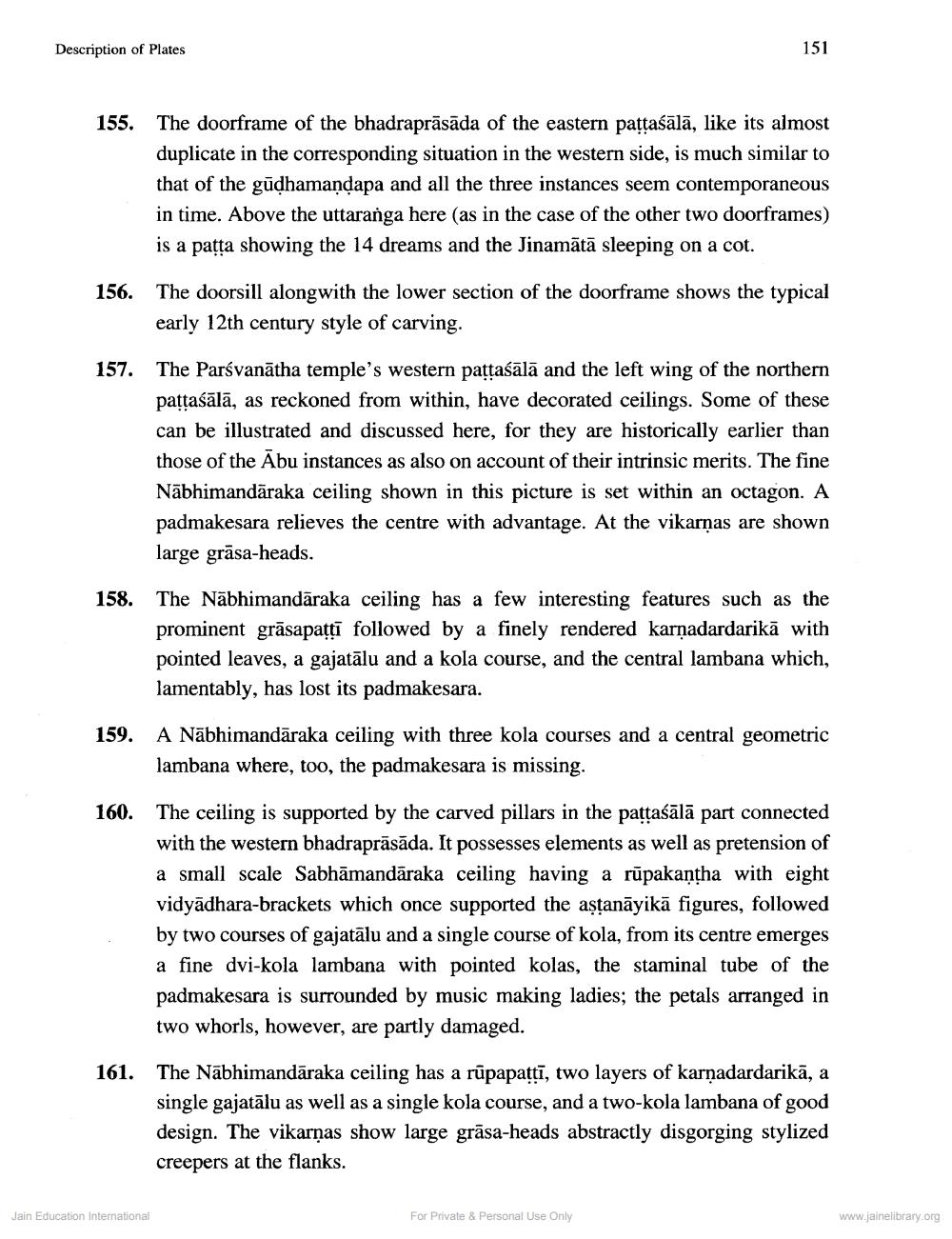________________
Description of Plates
155. The doorframe of the bhadraprāsāda of the eastern paṭṭaśālā, like its almost duplicate in the corresponding situation in the western side, is much similar to that of the gudhamandapa and all the three instances seem contemporaneous in time. Above the uttaranga here (as in the case of the other two doorframes) is a patta showing the 14 dreams and the Jinamätä sleeping on a cot.
156.
157.
158.
151
The doorsill alongwith the lower section of the doorframe shows the typical early 12th century style of carving.
The Parsvanatha temple's western pattaśālā and the left wing of the northern paṭṭaśālā, as reckoned from within, have decorated ceilings. Some of these can be illustrated and discussed here, for they are historically earlier than those of the Abu instances as also on account of their intrinsic merits. The fine Nābhimandāraka ceiling shown in this picture is set within an octagon. A padmakesara relieves the centre with advantage. At the vikarnas are shown large gräsa-heads.
Jain Education International
The Näbhimandāraka ceiling has a few interesting features such as the prominent gräsapatti followed by a finely rendered karṇadardarika with pointed leaves, a gajatālu and a kola course, and the central lambana which, lamentably, has lost its padmakesara.
159. A Nabhimandāraka ceiling with three kola courses and a central geometric lambana where, too, the padmakesara is missing.
160. The ceiling is supported by the carved pillars in the paṭṭaśālā part connected with the western bhadraprāsāda. It possesses elements as well as pretension of a small scale Sabhāmandāraka ceiling having a rūpakantha with eight vidyadhara-brackets which once supported the aṣṭanāyikā figures, followed by two courses of gajatālu and a single course of kola, from its centre emerges a fine dvi-kola lambana with pointed kolas, the staminal tube of the padmakesara is surrounded by music making ladies; the petals arranged in two whorls, however, are partly damaged.
161. The Nabhimandāraka ceiling has a rūpapaṭṭī, two layers of karnadardarikā, a single gajatālu as well as a single kola course, and a two-kola lambana of good design. The vikarņas show large gräsa-heads abstractly disgorging stylized creepers at the flanks.
For Private & Personal Use Only
www.jainelibrary.org




